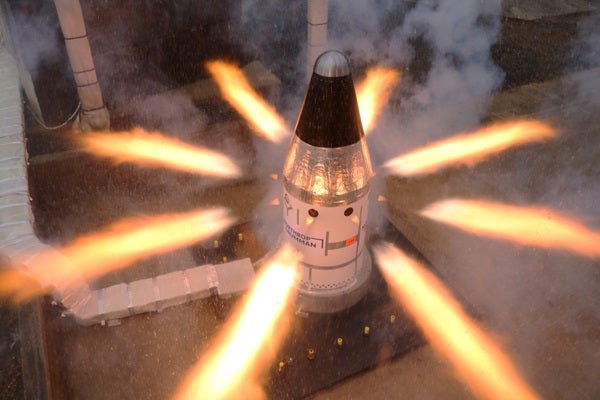The altitude control motor, made by Northup Grumman, is part of NASA’s Orion launch abort system, which will be extremely important if astronauts ever need to bail from a failed launch. The system is designed to quickly and safely navigate the crew away from a failed launch before deploying a parachute.
The launch abort system will have three rocket motors: the attitude control motor, the abort motor — which will get the crew vehicle away from the rocket — and the jettison motor, which separates the launch abort system from the Orion capsule prior to the parachutes deploying.
The Orion spacecraft will be the main vehicle used during the upcoming Artemis missions, which aim to put the first woman and next man on the Moon by 2024, though it may be pushed back to 2028.
NASA doesn’t plan to use the attitude control motor until the second Artemis mission planned for 2022. The first Artemis mission is set to take off in late 2020, which will see an uncrewed spacecraft orbit the Moon.










